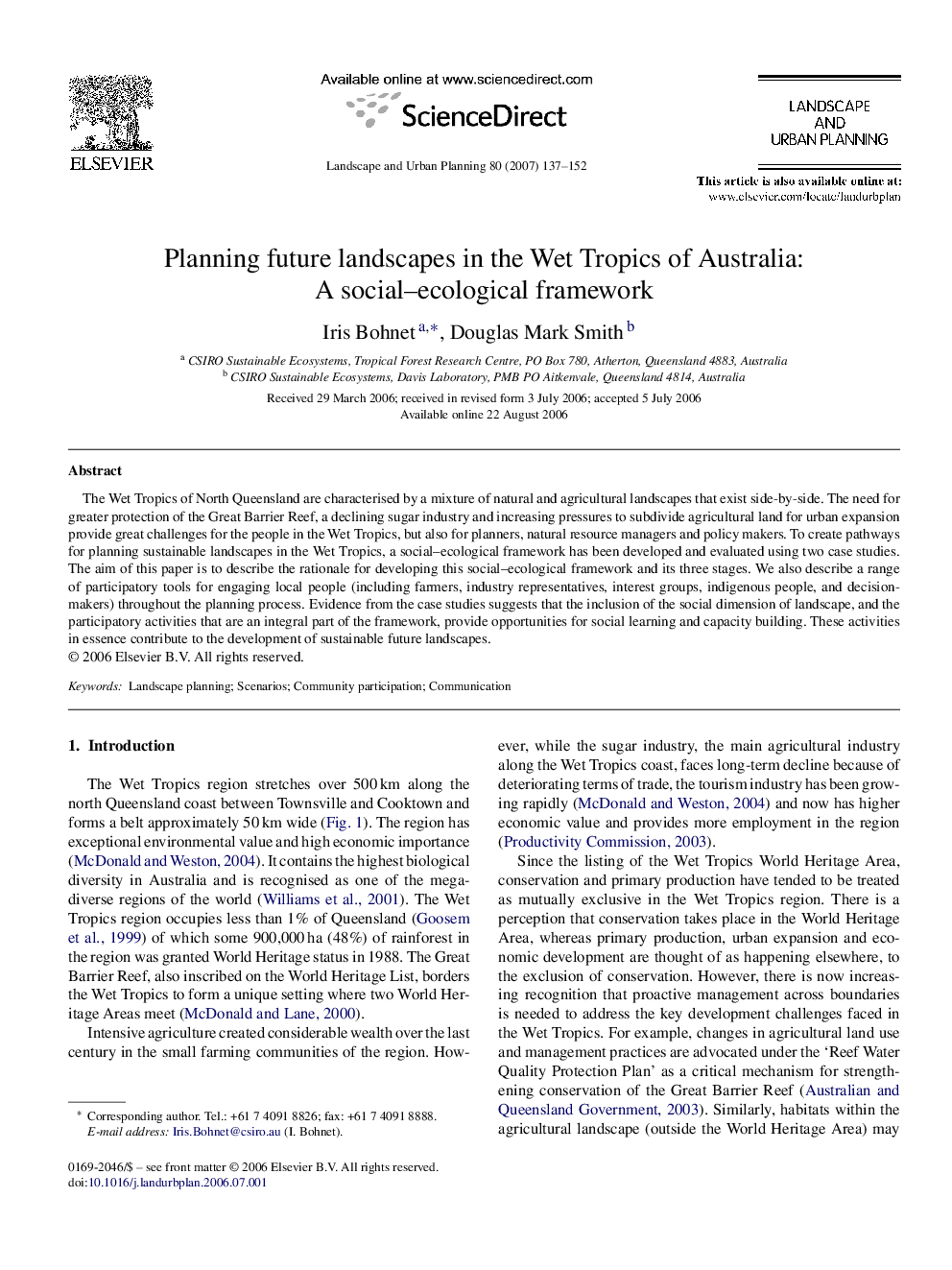| Article ID | Journal | Published Year | Pages | File Type |
|---|---|---|---|---|
| 1050695 | Landscape and Urban Planning | 2007 | 16 Pages |
The Wet Tropics of North Queensland are characterised by a mixture of natural and agricultural landscapes that exist side-by-side. The need for greater protection of the Great Barrier Reef, a declining sugar industry and increasing pressures to subdivide agricultural land for urban expansion provide great challenges for the people in the Wet Tropics, but also for planners, natural resource managers and policy makers. To create pathways for planning sustainable landscapes in the Wet Tropics, a social–ecological framework has been developed and evaluated using two case studies. The aim of this paper is to describe the rationale for developing this social–ecological framework and its three stages. We also describe a range of participatory tools for engaging local people (including farmers, industry representatives, interest groups, indigenous people, and decision-makers) throughout the planning process. Evidence from the case studies suggests that the inclusion of the social dimension of landscape, and the participatory activities that are an integral part of the framework, provide opportunities for social learning and capacity building. These activities in essence contribute to the development of sustainable future landscapes.
